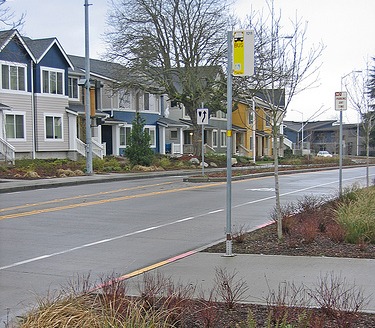 If you want to “sell” transit-oriented affordable housing to communities, you need to listen as well as talk.Photo: faceless bTransit-oriented development. Density. The dreaded affordable housing.
If you want to “sell” transit-oriented affordable housing to communities, you need to listen as well as talk.Photo: faceless bTransit-oriented development. Density. The dreaded affordable housing.
Planners know that these buzzwords can quickly get neighbors anxious about new building projects in their communities. Many planners also know that in areas with growing population, people have got to live somewhere — and more and more sprawl is not a sustainable solution.
That’s why they like to do what they call “community engagement,” reaching out to the potential neighbors of transit-oriented developments (TODs) and trying to win them over before knee-jerk opposition can form.
Do those efforts work? That’s a question asked in a study from the University of California Transportation Center.
The researchers conducted focus groups to find out what kind of information and style of presentation worked best. And what they found doesn’t just apply to planners who want to “sell” TOD and affordable housing. It’s useful for anyone who cares about encouraging sustainable development.
The study found that people skeptical of TOD and affordable housing responded to honesty and transparency, and were quick to notice when presentations didn’t cite the sources for claims such as, “People who live in affordable housing own fewer cars and drive less.” They wanted data, and they didn’t want to be condescended to:
Building up trust means avoiding deception and manipulation in favor of straightforward education….
[I]n order to really reach a community, establishing genuine personal relationships and trust will be essential. Practitioners should endeavor to respect community reality and truly cultivate honest communication with local leaders. Residents should feel that they have something to offer to the process other than just outright refusal or unconditional acceptance.
In other words, people can tell when you’re bullshitting them. So don’t do it. All the Powerpoint slides in the world aren’t going to be able to hide it if you don’t really want to hear what they have to say. Truly getting to know a community and engaging in real dialogue won’t just be a good “sell.” It could also result in better design and a greater sense of community ownership.
Hat tip to @wendy_waters and @ryanavent.


